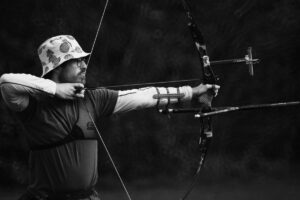As quick as a flash, you spot a deer sprinting across the forest clearing. You might ask yourself how fast that deer’s legs carry it away. Well, you’re in the right place to find out.
In your exploration, you’ll learn that a deer, such as the common whitetail, can run as fast as 35 miles per hour.
That’s not just for sport; it’s their key to survival.
You’ll discover the factors that influence their speed, how they use it to dodge predators, and how they stack up against other swift animals. It’s not just about the sprint; it’s about the life-saving art of escape.
Contents (Jump to Topic)
ToggleSo, let’s get started
Average Speed of a Deer
While you mightn’t witness it daily, a deer typically runs at an average speed of up to 30 miles per hour when evading predators or darting across open fields.
This running speed is crucial for their survival in the wild, allowing them to escape from threats with astonishing agility.
Depending on the species, some deer can reach even higher velocities. Whitetail deer, for instance, can accelerate to a top speed of 35 to 40 miles per hour.
However, they can only maintain this pace for long by risking exhaustion.
The average speed is a reliable indicator of how fast a deer can move when it’s crucial to do so.
read.. do deer move in fog
It’s a testament to their evolved abilities to navigate the challenges of their environment.
Factors Affecting a Deer’s Speed
How do environmental conditions, health, and age influence the running speed of a deer?
Well, deer are equipped with fast twitch muscle fibers that provide quick bursts of speed, essential to escape predators.
These muscles result from evolutionary arms races, where natural selection favored deer that could outrun threats. Young, healthy deer typically have more fibers, enabling them to maintain high speeds longer.
However, rugged terrain and obstacles can impede their pace. As deer age, their speed often decreases due to the natural decline in physical condition.
Essentially, a deer’s ability to sprint is a delicate balance, finely tuned by nature to ensure survival in a world where swiftness often means life.
How Deer Use Their Speed to Evade Predators
In light of their swift twitch muscle fibers, you’ll find deer leveraging their speed as a vital tool to outmaneuver predators, darting through the forest with astonishing agility.
When a threat looms, deer run at top speeds, engaging their fast-twitch muscle fibers for explosive bursts of movement.
They execute sharp turns and sudden sprints to evade predators like wolves and coyotes.
These crafty creatures know their limits; they’re wired not to maintain that speed for too long to avoid exhaustion.
As you observe, you’ll see deer use zigzag patterns, making it harder for predators to predict their path.
Additionally, their familiar trails are often booby-trapped with obstacles to trip up their pursuers. It’s a high-stakes game of survival, and speed is the deer’s trump card.
Comparing Deer Speed to Other Animals
Elk run faster, clocking in at 40 mph, and caribou can reach top speeds of 50 mph. Racehorses, too, might surpass deer, with some reaching over 40 mph.
Greyhounds, known for their lightning-fast sprints, can dash up to 43 mph, demonstrating better endurance than deer.
Even among predators, wolves have comparable speeds, running over 35 mph. So, while deer can reach remarkable speeds, several animals boast even greater velocities.
The Importance of Speed for Deer Survival
Deer’s remarkable speed, reaching up to 40 mph, is a critical factor in their survival, allowing them to evade predators and navigate their environment swiftly.
When you’re a deer, sprinting can be the difference between life and death.
Your agility helps you make sharp turns and sudden leaps, throwing off predators like wolves and coyotes.
You don’t just run; you perform an intricate dance of survival, zigzagging through the forest, conserving energy with strategic moves.
Your capacity to escape is paramount, and speed is your best defense. It’s not just about outrunning your pursuers; it’s about outsmarting them.
As a deer, you’ve evolved to master both, ensuring that your species continues to thrive despite the constant threat of predators lurking in the shadows.
Before you go …
You’ve now discovered that a deer’s speed is their lifeline, with whitetails clocking up to 40 mph.
Age, health, and terrain play considerable roles in their velocity. They outpace predators with remarkable agility, comparing impressively to other forest dwellers.
Ultimately, speed isn’t just impressive; it’s essential for their survival. So, next time you spot a deer sprinting, you’ll appreciate the beauty and the sheer necessity of their breathtaking haste.
Sources:
https://www.visitestespark.com/blog/post/8-fascinating-facts-about-elk/
https://nhpbs.org/natureworks/caribou.html/
https://wolf.org/wolf-info/basic-wolf-info/wolf-faqs/
https://en.wikipedia.org/wiki/White-tailed_deer






